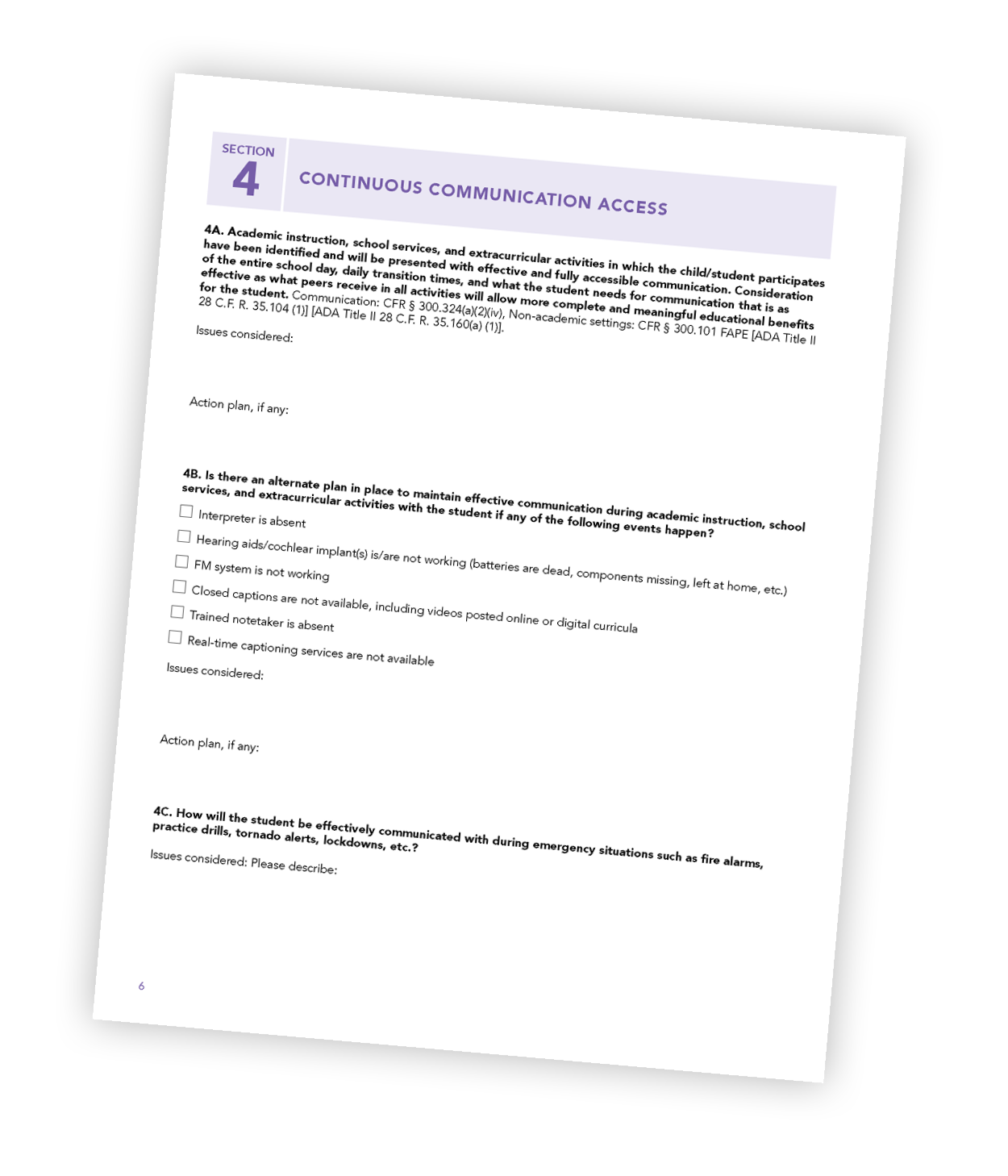Communication Planning Guide for Students Who Are Deaf or Hard of Hearing
Continuous Communication Access
Video: Outreach - 08_Carrie
This video is being reviewed for audio description.
What is Audio Description?
When Audio Description (AD) is enabled, descriptive language narrates what is on the screen. To learn more, visit our accessibility webpage.
Video Player Help
Kaltura Video Hosting: This website uses Kaltura, a video hosting company, to serve video content. If you are having difficulty viewing videos on this site, it may mean that your location (e.g., school district, organization) is blocking or filtering the Kaltura website. Please contact your IT personnel to resolve this issue.
Accessibility: We strive to make this website accessible for all users, including people with disabilities. To learn more visit our accessibility webpage.
Captions / Transcript
After hitting play you can access an interactive transcript for this video by selecting the Show Transcript icon![]() in the top right corner of the video when you select play.
in the top right corner of the video when you select play.
You can turn on captions by selecting the Enable Captions icon![]() in the bottom right corner. Captions can also be turned on by selecting the Settings icon
in the bottom right corner. Captions can also be turned on by selecting the Settings icon![]() , where you can also set your caption preferences.
, where you can also set your caption preferences.
When available, you can use Spanish subtitles for this video by selecting Settings![]() and choosing Spanish in the Captions drop down menu.
and choosing Spanish in the Captions drop down menu.
Section 4
The purpose of this section is to guide teams in discussing issues related to accessibility throughout the school day, including plans for maintaining effective communication in the event that amplification systems stop working or the interpreter is absent.
A student who is deaf or hard of hearing has complex communication needs, and these needs can vary and change multiple times during the school day based on the environmental surroundings and peers. Even when using amplification, many students who have a hearing loss struggle to hear in lunch rooms, crowded hallways, assemblies, gym class, on the school bus, and even in the classroom. Transitions between classes or environmental changes can often be overlooked. It is also critical that students who are deaf and hard of hearing have access to communication during such things as emergency drills and procedures, as well as during actual emergencies. Deaf and hard of hearing students should also be afforded the same after-school opportunities as their peers.
As teams plan for continuous communication, ensuring access and engagement for a student across a school day, consider:
Sample Discussion Questions
- How will communication access be provided during classroom instruction? During small-group or therapy sessions? During extracurricular activities?
- Do parents need to request communication access for after-school events?
- How does the student communicate with peers and staff during recess? Lunch? Does the change in room acoustics impact the student’s ability to listen?
- If school field trips are taken, what are the plans for ensuring effective communication during the bus ride and throughout the trip?
- What are the IEP team’s plan for finding and contacting a substitute interpreter?
- Does the IEP team know how or where to get closed captions added to digital media?
- Are the existing alert systems visually accessible (e.g., flashing fire alarms) for the student? Does the student understand the safety protocols for emergency situations?
